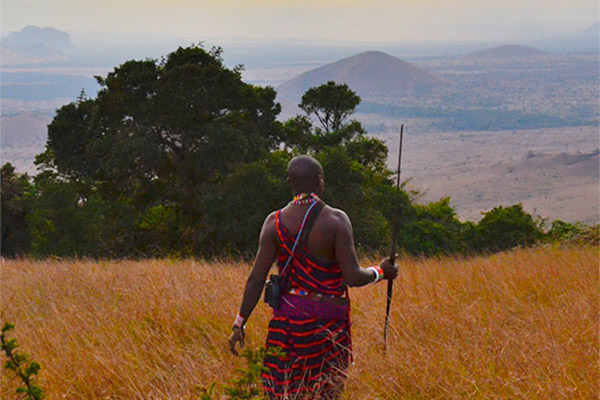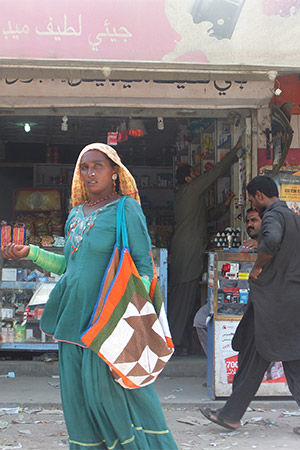This Issue Volume 11, Number 1, June 2020
Read the June 2020 issue.
How Children’s Well-Being Reflects Government Choices and National Circumstances in the Democratic Republic of Congo and Rwanda
By Kayla Benjamin
This article looks at children’s rights and protections in the Democratic Republic of Congo (DRC) and Rwanda. During the last few decades, Rwanda has made significant progress economically and in terms of human development, whereas the DRC has continued to struggle. Examining children’s rights in both countries reveals that national government choices as well as historical legacies of conflict and instability contribute to a nation’s ability to take care of its children.
Read the full article:
How Children’s Well-Being Reflects Government Choices and National Circumstances in the Democratic Republic of Congo and Rwanda
Struggling to Survive:
Water Scarcity and Poor Sanitation in Colombia and Kenya
By Morgan Bluma
This article compares and contrasts the access to safe water and sanitation in Colombia and Kenya. Kenya has some serious issues with access to clean and safe water, whereas Colombia has a large majority of people able to have clean water. Yet, only a few cities in Colombia allow people to drink tap water due to some high levels of contamination. On the bright side, both countries have been improving access to water from an improved source for the last few years. But the major issue, for both countries, is access to safe water in rural areas. Surprisingly, Colombia struggles to have improved water sources for its rural areas, even though they have a high level of economic development. Even though Colombia is one of the most water-rich countries, it still struggles with water stress. Kenya has distant water sources that make getting water to rural areas a struggle. This article analyzes why both countries continue to struggle to create safe water and improved sanitation at their different levels. It will also examine how two different governments are trying to improve the issues that remain.
Read the full article:
Struggling to Survive: Water Scarcity and Poor Sanitation in Colombia and Kenya
Fighting for Equality:
Analyzing Inequality in Rwanda and South Africa
By Eleanor Dennehy
This article examines the inequality that exists within South Africa and Rwanda. Both countries have a history of genocide that have both stemmed and resulted in inequalities, some aspects are similar in both countries, and some are wildly different. This article looks at the inequality in South Africa and Rwanda regarding income and education. Both South Africa and Rwanda have spent the last 25 years trying to rebuild their countries after experiencing a genocide in Rwanda and overcoming Apartheid in South Africa.
Read the full article:
Fighting for Equality: Analyzing Inequality in Rwanda and South Africa
Closing the Gender Gap:
Women’s Rights in Ethiopia and Mexico
By Ain Wright
This article examines gender inequality in Ethiopia and Mexico as both countries are slowly advancing on the path to gender equality. Over the past two decades, both Ethiopia and Mexico have enacted many public policies aimed at empowering women, increased investments in girls' education, greatly expanded childcare and preschool, improved gender mainstreaming in government, and ensured that female politicians are well-represented at the ballot box. Yet, despite these efforts, these changes have not sufficiently addressed the deep-seated bias against women and many women in these countries still do not feel the effects of these policies at home, at work, or in public. Large gender gaps remain in educational outcomes, participation in the labor market, pay, informality status, and hours of unpaid childcare and housework. While the implementation of new policies carries a lot of potential for gender equality that potential is thwarted by not only violence but also other insidious obstacles: cultural conceptions of gender, workplace discrimination, and impediments to education.
Read the full article:
Closing the Gender Gap: Women’s Rights in Ethiopia and Mexico

Global Majority E-Journal is a biannual journal publishing on critical issues in the lives of the global majority: the more than 80 percent of the world's population living in developing countries. Topics discussed include poverty, population growth, access to safe water, climate change, and agricultural development. All articles are based on research papers written by AU undergraduate students (mostly freshmen) as one of the course requirements for AU's General Education Course: Econ-110, The Global Majority.

- December 2023
- June 2023
- December 2022
- June 2022
- December 2021
- June 2021
- December 2020
- June 2020
- December 2019
- June 2019
- All Issues (starting 2010) via AU Digital Research Archive
